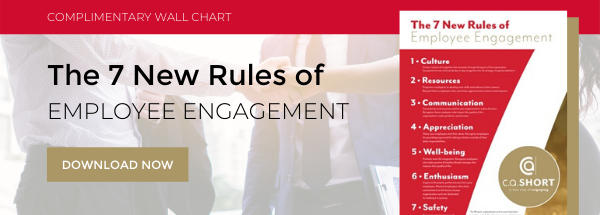How to Stop Employee Disengagement Before It Starts

We've spoken a great deal about how to engage employees within your organization. That's why this blog will focus on the other end of the spectrum -- identifying employee disengagement. When you hear the term "disengaged employee," it's easy to think of employees browsing Facebook or placing personal Amazon orders. However, disengaged employees are not always that easy to spot. Most of the time, they have not always been disengaged, but through a series of events, they find themselves caught in a cycle of negative thoughts or with an apathetic outlook on their responsibilities. Employees that were once proactive thinkers can become purely reactive and stop contributing in meetings.
 How Do Engaged Employees Become Disengaged?
How Do Engaged Employees Become Disengaged?
The Art of Engagement by Jim Haudan points out that disengaged employees feel overwhelmed and confused about expectations. They are scared of speaking up to management and aren't given the access to see the big picture of an organization. Plus, disengaged employees don't feel ownership over their work and believe leadership is out of touch with reality.
It is easy to understand why someone would lose interest in their job with any of these thoughts. Many studies have also shown that employees develop a sense of failure when the only form of feedback they receive is when something goes wrong. Without a clear picture of goals, expectations and an open way to safely communicate opinions, employees aren't given the tools to be successful.
Disengaged employees tend to act out their unhappiness by bringing down the morale of other workers through negative comments and a lackadaisical approach to their responsibilities. These workers cost the employer time & money and risk damaging the reputation of a company.
What Does an Engaged Employee Look Like?
Engaged employees are people who care about the future of the company, because they feel invested in their work and appreciated for their efforts. It is essential for companies to stop the progression of disengagement before it starts by putting practices in place that set clear expectations and give a balance of positive and constructive feedback, as well as recognize success.
How the 7 NEW Rules of Employee Engagement Can Help
What steps can you take to prevent disengagement? To help you understand what it takes to see these kinds of changes within your organization, we've written The 7 NEW Rules of Employee Engagement. As you can see below, it all begins with creating a culture of engagement through recognition.
- Culture: Create a culture of recognition that resonates through all aspects of your organization. Incorporate formal, informal & day-to-day recognition into the strategic recognition platform.
- Resources: Empower employees to develop new skills to advance their careers. Reward those employees who use those opportunities to learn and improve.
- Communication: Consistently communicate and live your organization’s values & vision. Recognize those employees who impact the quality of the organization’s work, products, and services.
- Appreciation: Value your employees and their ideas. Recognize employees for providing input and for taking initiative outside of their daily responsibilities.
- Well-being: Promote work-life integration. Recognize employees who make positive & healthy lifestyle changes that improve their quality of life.
- Enthusiasm: Inspire enthusiastic performances from your employees. Reward employees who show commitment to the future of your organization and are dedicated to making it a success.
- Safety: Encourage employees to work both efficiently and safely. Recognize those employees who maintain a safe and healthy working environment for themselves and others.
C.A. Short Company partners with companies to manage, drive and facilitate increased employee engagement to increase financial performance, productivity, quality, and core performance outcomes. Our process and research-based platform enables executives and managers to engage their teams to increase the bottom line, motivate staff, and incentivize positive behavior. To Request a Complimentary Consultation, click here.
